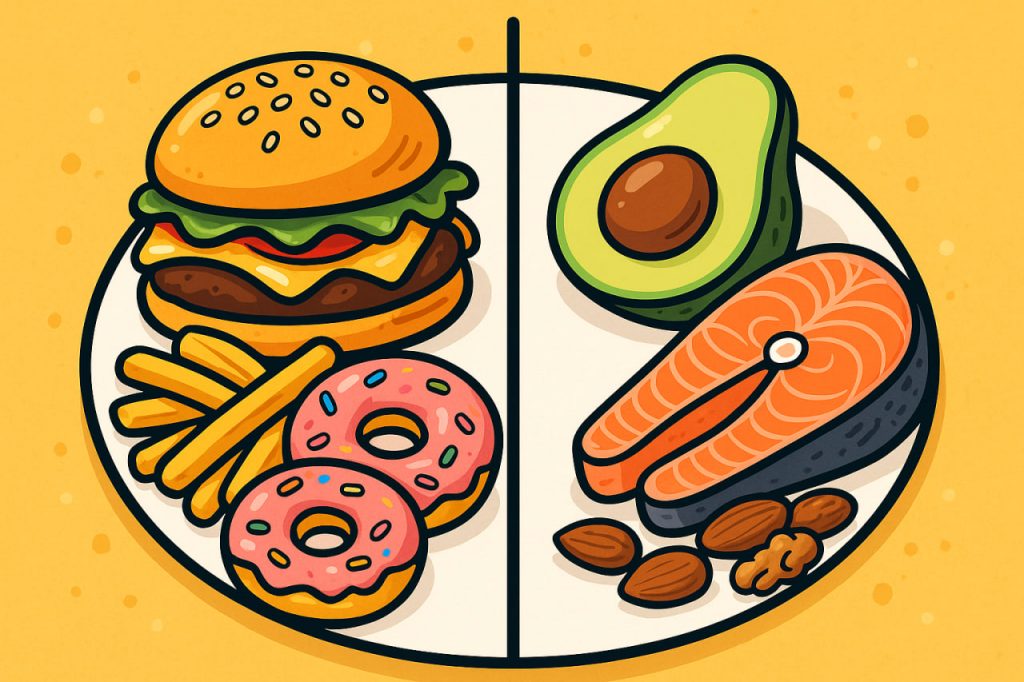High-fat meals are foods or dishes that contain a large proportion of fats compared to proteins and carbohydrates. While fats are an essential nutrient and play an important role in energy storage, hormone production, and absorption of vitamins, consuming them in excessive amounts—especially unhealthy fats—can negatively impact health. Understanding what high-fat meals are and their effects on the body helps people make more balanced dietary choices.
Types of Fats in High-Fat Meals
Not all fats are the same, and the type of fat determines whether a high-fat meal is harmful or beneficial.
- Saturated fats – found in red meat, butter, cheese, and fried foods. High intake is linked to heart disease.
- Trans fats – present in processed foods, margarine, and fast food. These are the most harmful, increasing the risk of obesity and cardiovascular problems.
- Unsaturated fats – found in olive oil, avocados, nuts, and fish. These are considered healthy and support heart and brain health.
Examples of High-Fat Meals
- Fast food such as burgers, fries, and fried chicken.
- Creamy pasta with cheese and butter-based sauces.
- Processed snacks like chips, pastries, and doughnuts.
- Meals rich in fatty cuts of meat.
- On the healthy side: salmon with avocado salad, or nuts and seeds as part of a balanced meal.
Impact on the Body
Eating high-fat meals affects the body in several ways:
- Short-term: feelings of heaviness, slower digestion, and reduced plasma quality (important for donors).
- Long-term (unhealthy fats): increases risk of obesity, heart disease, type 2 diabetes, and high cholesterol.
- Long-term (healthy fats): support brain function, reduce inflammation, and protect cardiovascular health.
Balance Is Key
Nutritionists recommend that fats should make up about 20–35% of daily calorie intake, with an emphasis on healthy unsaturated fats. Occasional high-fat meals are not dangerous if the overall diet is balanced, but frequent consumption of unhealthy fats can be harmful.
Conclusion
High-fat meals are those rich in fats, particularly saturated and trans fats, which can harm health when consumed too often. However, meals with healthy unsaturated fats can be beneficial in moderation. The key lies in choosing the right types of fat and balancing them with proteins, fiber, and complex carbohydrates.
Glossary
- Saturated fats – fats mostly found in animal products and some oils.
- Trans fats – artificially produced fats harmful to health.
- Unsaturated fats – healthy fats found in plants and fish.
- Cholesterol – a fat-like substance in the blood, influenced by diet.
- Calorie intake – the total amount of energy consumed through food and drink.


